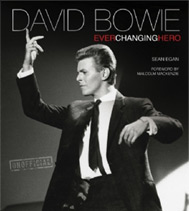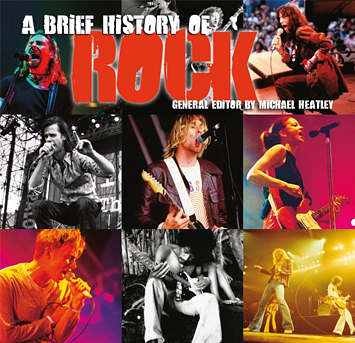(Guitar, vocals, 1937–69) Along with peers Otis Rush and Buddy Guy, Mississippi native Samuel Maghett pioneered the ghetto-born mix of soul singing and guitar pyrotechnics that defined Chicago’s West Side sound. ‘Easy Baby’ and ‘All Your Love’, cut for Cobra in the 1950s, are his signature tunes, but his Delmark LP West Side Soul (1967) is ...
(Vocal duo, 1965–70) The original inspiration for The Blues Brothers, Sam Moore and Dave Prater signed to Atlantic in 1965 and recorded a string of energetic soul shouts at Stax under the production team of Isaac Hayes and David Porter, including ‘Hold On! I’m Coming’ and Southern Soul anthem ‘Soul Man’. They split in 1970, personal ...
(Vocal/instrumental duo, 1920s–70s) The McGee brothers, Sam (1894–1975) and Kirk (1899–1983) from Franklin, Tennessee, were the first guitar stars of the Grand Ole Opry, and remained affiliated to the show for half a century. Sam’s adroit picking is exemplified by his own discs, including ‘Buck Dancer’s Choice’ and others with Uncle Dave Macon, whom ...
In 1981, Sam Bush (mandolin, vocals, b. 1952) lost half of his band, The New Grass Revival, to road weariness. Courtney Johnson (banjo, 1939–96) and Curtis Burch (guitar, vocals, b. 1945) were exhausted by the tours with Leon Russell and the club and festival dates in between. So Bush and his remaining partner ...
(Vocals, 1931–64) With his pure sweet voice, sound business awareness and keen social concerns, Sam Cooke was a key figure in the early development of soul and pop. He was already a star as a member of gospel group The Soul Stirrers when he was sacked in 1956 for releasing a secular solo single. He launched his solo ...
(Drums, vocals, b. 1935) Shuffle master Lay was an important figure in the racial integration of 1960s blues. He was born in Birmingham, Alabama and moved to Chicago, where he played with Little Walter, Howlin’ Wolf and other Chess Records artists. He joined the Paul Butterfield Blues Band for its first two albums and played on ...
(Trumpet, 1895–1936) An early practitioner of New Orleans jazz, Morgan travelled the Bay St. Louis-Pensacola-Mobile circuit and played Crescent City venues, including the Savoy on Rampart Street, before suffering a stroke in 1925. He recovered and in 1927 made recordings at the Werlein’s Music Store on Canal Street for the Columbia label, including ‘Mobile Stomp’, ‘Bogalousa ...
(Various saxophones, flute, b. 1923) Sam Rivers boasts a most impressive résumé: bebop with Tadd Dameron and Dizzy Gillespie, hard bop with Miles Davis, free jazz with Cecil Taylor and Anthony Braxton, and Grammy consideration for his big band. Born in Oklahoma, Rivers played around Florida and Boston in the 1950s before settling in New ...
(Piano, arranger, bandleader, 1895–1985) Wooding led his Society Syncopators in the early 1920s before travelling to Berlin in 1925 with the Chocolate Kiddies revue. One of the first wave of expatriate American jazz musicians to live abroad, he spent the remainder of the 1920s in Europe playing with bands that featured star soloists such as Doc Cheatham ...
(Washboard, vocals, 1910–66) Robert Brown was born in Walnut Ridge, Arkansas and was the half-brother of Big Bill Broonzy. He left home to play with street singers in the Memphis area in the mid-1920s. In 1932 he moved to Chicago and teamed up with Sleepy John Estes and Hammie Nixon. He made his recording debut for Bluebird in ...
tro khmer. The Okinawan kucho, traditionally three-stringed, has recently gained a fourth. Thailand’s saw u and saw duang are very like an erhu, but the three-stringed saw sam sai is a rather different shape, with a rounded-triangular soundbox and long lower spike. Indonesia also has spike-fiddles, which include the chunky two-stringed geso-geso and an elegant long-spiked ...
everything to do with being eye-catching. The instrument encircles the player, passing across the right hip and over the left shoulder in the manner of the shoulder-band of a Sam Brown military belt, with the bell rising over the player’s left shoulder to point forwards. An alternative model, with the bell pointing directly upwards – therefore nicknamed the ...
+ 4 + 4. The tabla player embellishes the theká according to the pattern of the stressed beats, and will include increasingly more complex improvisations or tukrá immediately before sam returns. Introduction | Percussion Instruments Instruments | Djembe | Percussion ...
gospel plea for deliverance and the altogether earthier blues lament. It rose to prominence through the innovations of two further black male pioneers from the southern states. Mississippi gospel heart-throb Sam Cooke made a controversial move to secular pop in 1956. By 1957 his ‘You Send Me’ – a heart-melting mix of teen pop and Cooke’s alternately tender and roaring gospel ...
(Vocals, 1946–2003) Discovered in 1965 by Otis Redding, Conley shared with him an admiration for Sam Cooke. Redding gets a name-check (twice) in Conley’s one big hit, ‘Sweet Soul Music’ (produced by Redding in 1967), a frantic rock’n’roll work-out with punctuating brass, which exuberantly celebrated the soul greats of the day. Conley was a regular member of ...
AUTHORITATIVE
An extensive music information resource, bringing together the talents and expertise of a wide range of editors and musicologists, including Stanley Sadie, Charles Wilson, Paul Du Noyer, Tony Byworth, Bob Allen, Howard Mandel, Cliff Douse, William Schafer, John Wilson...
CURATED
Classical, Rock, Blues, Jazz, Country and more. Flame Tree has been making encyclopaedias and guides about music for over 20 years. Now Flame Tree Pro brings together a huge canon of carefully curated information on genres, styles, artists and instruments. It's a perfect tool for study, and entertaining too, a great companion to our music books.

David Bowie
Fantastic new, unofficial biography covers
his life, music, art and movies, with a
sweep of incredible photographs.


